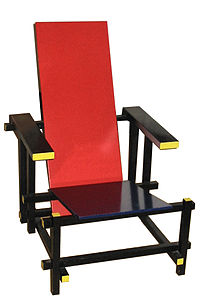
We speak of concrete and not abstract painting because nothing is more concrete, more real than a line, a color, a surface.”
— Theo van Doesburg
De Stijl (1917 – 1931), also known as Neo-plasticism, was a Dutch artistic movement and school of painting established by Theo van Doesburg and Piet Mondrian in Amsterdam. Proponents of De Stijl advocated pure abstraction and universality by a reduction to the essentials of form and color; they simplified visual compositions to the vertical and horizontal directions, and used only primary colors along with black and white.
The Netherlands-based De Stijl movement embraced an abstract, pared-down aesthetic centered in basic visual elements such as geometric forms and primary colors. Partly a reaction against the decorative excesses of Art Deco, the reduced quality of De Stijl art was envisioned by its creators as a universal visual language appropriate to the modern era, a time of a new, spiritualized world order. Led by the painters Theo van Doesburg and Piet Mondrian – its central and celebrated figures – De Stijl artists applied their style to a host of media in the fine and applied arts and beyond. Promoting their innovative ideas in their journal of the same name, the members envisioned nothing less than the ideal fusion of form and function, thereby making De Stijl in effect the ultimate style. To this end, De Stijl artists turned their attention not only to fine art media such as painting and sculpture, but virtually all other art forms as well, including industrial design, typography, even literature and music. De Stijl’s influence was perhaps felt most noticeably in the realm of architecture, helping give rise to the International Style of the 1920s and 1930s.
Principles and influences
In general, De Stijl proposed ultimate simplicity and abstraction, both in architecture and painting, by using only straight horizontal and vertical lines and rectangular forms. Furthermore, their formal vocabulary was limited to the primary colors, red, yellow, and blue, and the three primary values, black, white, and grey. The works avoided symmetry and attained aesthetic balance by the use of opposition. This element of the movement embodies the second meaning of stijl: “a post, jamb or support”; this is best exemplified by the construction of crossing joints, most commonly seen in carpentry.
In many of the group’s three-dimensional works, vertical and horizontal lines are positioned in layers or planes that do not intersect, thereby allowing each element to exist independently and unobstructed by other elements. This feature can be found in the Gerrit Rietveld’s Red and Blue Chair.
De Stijl was influenced by Cubist painting as well as by the mysticism and the ideas about “ideal” geometric forms (such as the “perfect straight line”) in the neoplatonic philosophy of mathematician M. H. J. Schoenmaekers. The De Stijl movement was also influenced by Neo-positivism. The works of De Stijl would influence the Bauhaus style and the international style of architecture as well as clothing and interior design.
De Stijl Key Ideas:
- Like other avant-garde movements of the time, De Stijl, which means simply “the style” in Dutch, emerged largely in response to the horrors of World War I and the wish to remake society in its aftermath. Viewing art as a means of social and spiritual redemption, the members of De Stijl embraced a utopian vision of art and its transformative potential.
- Among the pioneering exponents of abstract art, De Stijl artists espoused a visual language consisting of precisely rendered geometric forms – usually straight lines, squares, and rectangles–and primary colors. Expressing the artists’ search “for the universal, as the individual was losing its significance,” this austere language was meant to reveal the laws governing the harmony of the world.
- Even though De Stijl artists created work embodying the movement’s utopian vision, their realization that this vision was unattainable in the real world essentially brought about the group’s demise. Ultimately, De Stijl’s continuing fame is largely the result of the enduring achievement of its best-known member and true modern master, Piet Mondrian.
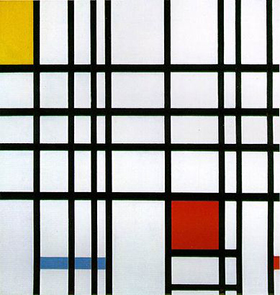 Piet Mondrian (1872–1944) was a Dutch Neo-plasticist painter, and one of most important artists of 2oth century. He developed the language of the abstract paintings. As an important contributor to the De Stijl art movement and group, which was founded by Theo van Doesburg, he evolved a non-representational form which he termed Neo-plasticism. This consisted of white ground, upon which was painted a grid of vertical and horizontal black lines and the three primary colors.
Piet Mondrian (1872–1944) was a Dutch Neo-plasticist painter, and one of most important artists of 2oth century. He developed the language of the abstract paintings. As an important contributor to the De Stijl art movement and group, which was founded by Theo van Doesburg, he evolved a non-representational form which he termed Neo-plasticism. This consisted of white ground, upon which was painted a grid of vertical and horizontal black lines and the three primary colors.
Mondrian’s art always was intimately related to his spiritual and philosophical studies. In 1908, he became interested in the theosophical movement launched by Helena Petrovna Blavatsky in the late 19th century; and, in 1909, he joined the Dutch branch of the Theosophical Society. The work of Blavatsky and a parallel spiritual movement, Rudolf Steiner’s Anthroposophy, significantly affected the further development of his aesthetic. Blavatsky believed that it was possible to attain a more profound knowledge of nature than that provided by empirical means, and much of Mondrian’s work for the rest of his life was inspired by his search for that spiritual knowledge.
Mondrian and his later work were deeply influenced by the 1911 Moderne Kunstkring exhibition of Cubism in Amsterdam. His search for simplification is shown in two versions of Still Life with Ginger Pot (Stilleven met Gemberpot). The 1911 version is Cubist; in, the 1912 version, it is reduced to a round shape with triangles and rectangles. The National Museum of Serbia was the first museum to include one of Mondrian’s paintings in its permanent exhibition.
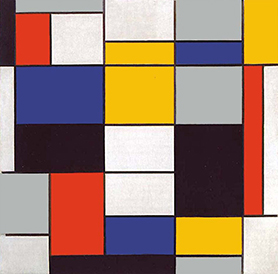 Title: Composition A (1920)
Title: Composition A (1920)
Artist: Piet Mondrian
Artwork Description & Analysis: Composition A – whose title announces its nonobjective nature, making no reference to anything beyond itself – is a good example of Mondrian’s geometric abstraction before it fully matured within the framework of the De Stijl aesthetic. With its rectilinear forms made up of solid, outlined areas of color, the work reflects the artist’s experimentation with Schoenmaekers’s mathematical theory and search for a pared-down visual language appropriate to the modern era. While here Mondrian uses blacks and shades of grey, his paintings would later be further reduced, ultimately employing more basic compositions and only solid blocks of primary colors.
(Oil on canvas – The National Gallery of Modern and Contemporary Art, Rome)
The Proclamation of the Bauhaus (1919) described a utopian craft guild combining architecture, sculpture, and painting into a single creative expression.”
The Bauhaus (1919-1933) was founded in the city of Weimar by German architect Walter Gropius. Its core objective was a radical concept: to reimagine the material world to reflect the unity of all the arts. Gropius explained this vision for a union of art and design in the Proclamation of the Bauhaus (1919), which described a utopian craft guild combining architecture, sculpture, and painting into a single creative expression. Gropius developed a craft-based curriculum that would turn out artisans and designers capable of creating useful and beautiful objects appropriate to this new system of living.
The Bauhaus combined elements of both fine arts and design education. The curriculum commenced with a preliminary course that immersed the students, who came from a diverse range of social and educational backgrounds, in the study of materials, color theory, and formal relationships in preparation for more specialized studies. This preliminary course was often taught by visual artists, including Paul Klee, Vasily Kandinsky (1866–1944), and Josef Albers, among others.
Following their immersion in Bauhaus theory, students entered specialized workshops, which included metalworking, cabinetmaking, weaving, pottery, typography, and wall painting. Although Gropius’ initial aim was a unification of the arts through craft, aspects of this approach proved financially impractical. While maintaining the emphasis on craft, he repositioned the goals of the Bauhaus in 1923, stressing the importance of designing for mass production. It was at this time that the school adopted the slogan “Art into Industry.”
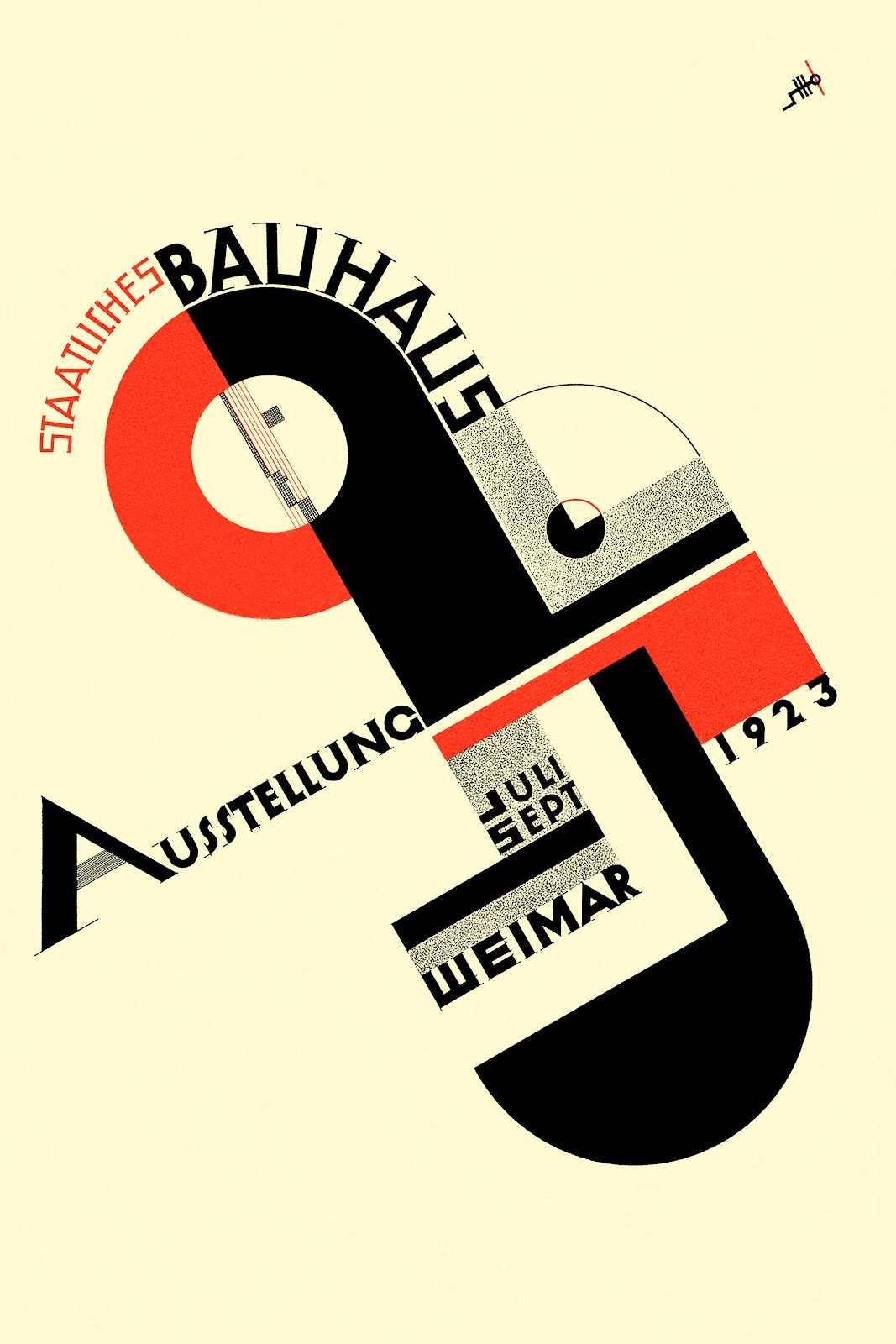
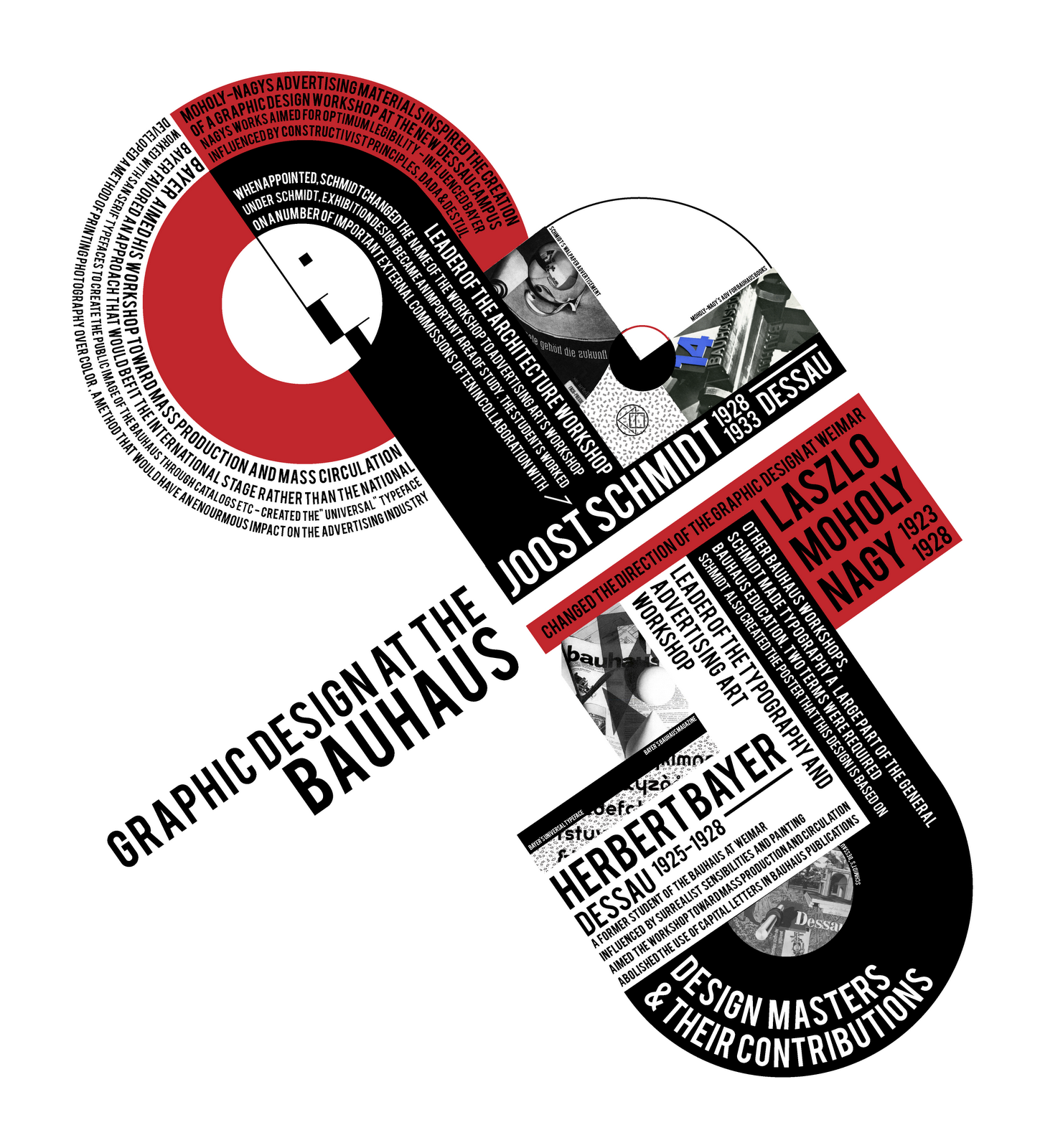 The Bauhaus, a German word meaning “house of building”, was a school founded in 1919. It was the most influential modernist art school of the 20th century, one whose approach to teaching, and understanding art’s relationship to society and technology, had a major impact both in Europe and the United States long after it closed. It was shaped by the 19th and early 20th centuries trends such as Arts and Crafts movement, which had sought to level the distinction between fine and applied arts, and to reunite creativity and manufacturing.
The Bauhaus, a German word meaning “house of building”, was a school founded in 1919. It was the most influential modernist art school of the 20th century, one whose approach to teaching, and understanding art’s relationship to society and technology, had a major impact both in Europe and the United States long after it closed. It was shaped by the 19th and early 20th centuries trends such as Arts and Crafts movement, which had sought to level the distinction between fine and applied arts, and to reunite creativity and manufacturing.
The motivations behind the creation of the Bauhaus lay in the 19th century, in anxieties about the soullessness of manufacturing and its products, and in fears about art’s loss of purpose in society. Creativity and manufacturing were drifting apart, and the Bauhaus aimed to unite them once again, rejuvenating design for everyday life.
Although the Bauhaus abandoned much of the ethos of the old academic tradition of fine art education, it maintained a stress on intellectual and theoretical pursuits, and linked these to an emphasis on practical skills, crafts and techniques that was more reminiscent of the medieval guild system. Fine art and craft were brought together with the goal of problem solving for a modern industrial society.
The Bauhaus had a major impact on art and architecture trends in Western Europe, the United States, Canada and Israel in the decades following its demise, as many of the artists involved fled, or were exiled by, the Nazi regime. Tel Aviv in 2004 was named to the list of world heritage sites by the UN due to its abundance of Bauhaus architecture; it had some 4,000 Bauhaus buildings erected from 1933 on.
The influence of the Bauhaus on design education was significant. One of the main objectives of the Bauhaus was to unify art, craft, and technology, and this approach was incorporated into the curriculum of the Bauhaus. The structure of the Bauhaus Vorkurs (preliminary course) reflected a pragmatic approach to integrating theory and application. In their first year, students learn the basic elements and principles of design,color theory, plus experimented with a range of materials and processes. This approach to design education became a common feature of architectural and design school in many countries.
Additional Reading:
https://artblot.wordpress.com/2014/05/28/a-simple-view-of-modern-art-movements/
